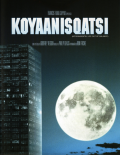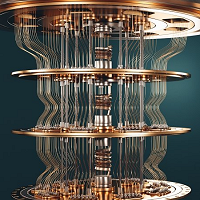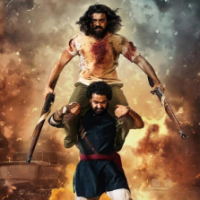 I mentioned Stanley Kubrick‘s 2001: A Space Odyssey recently. It’s actually one of my favorite films, although by “favorite” I mean it makes my Top 25 Best Films list (or it would if I ever made one). I consider it a major landmark in the cinema landscape.
I mentioned Stanley Kubrick‘s 2001: A Space Odyssey recently. It’s actually one of my favorite films, although by “favorite” I mean it makes my Top 25 Best Films list (or it would if I ever made one). I consider it a major landmark in the cinema landscape.
I’m not sure it makes my Top 25 Favorite Films list, but that’s only because there are so many others I love for reasons beyond their mere quality. It would probably make the Top 50 list, and I’m sure it’s in my Top 100. Some find it opaque or pointless, but to me it’s a visual tone poem that’s as beautiful as it is technically accomplished.
When I say that last part, people sometimes ask me what a visual tone poem is.
 Let me begin by saying that I don’t represent myself here as any great shakes when it comes to cinema or — especially — poetry analysis. Like many people, I love movies, and like a few people, I was a film student in college. Back then I had hopes of a movie career, but I ended up on a different path. Maybe I’ve paid a little bit more attention to movies than most, but I’m strictly an interested fan.
Let me begin by saying that I don’t represent myself here as any great shakes when it comes to cinema or — especially — poetry analysis. Like many people, I love movies, and like a few people, I was a film student in college. Back then I had hopes of a movie career, but I ended up on a different path. Maybe I’ve paid a little bit more attention to movies than most, but I’m strictly an interested fan.
When it comes to knowing about poetry, I’m not even amateur class. It’s like going to the opera. I enjoy watching, it’s beautiful in sight and sound, it can sometimes be enthralling and very emotional, but I often don’t really understand what I’m seeing (let alone pick up on the musical nuances).
So consider this very uninformed, but here’s how I look at it:
 Firstly, a tone poem is a musical work specifically written to evoke a narrative. If you’ve ever seen Walt Disney’s stunning Fantasia (another cinema landmark), you’ve listened to several musical pieces with specific narratives.
Firstly, a tone poem is a musical work specifically written to evoke a narrative. If you’ve ever seen Walt Disney’s stunning Fantasia (another cinema landmark), you’ve listened to several musical pieces with specific narratives.
In particular, The Sorcerer’s Apprentice, written by Paul Kukas in 1897. His symphonic piece is based on Goethe‘s poem with the same name, so this is a piece of music that follows a written text.
Ironically, the Fantasia segment, The Sorcerer’s Apprentice, is (probably) not a visual tone poem, but a clearly told story. There is only one interpretation of the events Micky experiences.
 However, the line is somewhat fuzzy; there is no dialog, a common trait of a visual tone poem. To me the clarity of the narrative is what pushes it over the line into storyland.
However, the line is somewhat fuzzy; there is no dialog, a common trait of a visual tone poem. To me the clarity of the narrative is what pushes it over the line into storyland.
While I’m talking musical pieces, the key musical piece in 2001, the one most often identified with the film, is (of course) Also sprach Zarathustra by Richard Strauss. The piece is based on Nietzsche‘s philosophical novel with the same name. That doesn’t make 2001 a visual tone poem any more than the Kukas does the Micky Mouse cartoon, but it’s an interesting connection.
The defining characteristic is that music (one medium) seeks to express or evoke a very different medium (in this case, text).
Incidentally, there are also tone poems. That is, there are poems (one medium) that seek to express themselves musically or with other pure sounds.
 An interesting characteristic of any kind of tone poem is that they are performance pieces. They evoke little as notes or words on paper. In general, with abstract art (and poetry can be highly abstract), the audience is a key part of the art. It’s almost quantum. The art has to be seen to take effect.
An interesting characteristic of any kind of tone poem is that they are performance pieces. They evoke little as notes or words on paper. In general, with abstract art (and poetry can be highly abstract), the audience is a key part of the art. It’s almost quantum. The art has to be seen to take effect.
I will confess that I’m apparently too naive musically for such tone poems to evoke much more in me than, “Gee, that’s really great music!” I get no sense of story from them. (But then I also don’t get how wine or cheese can taste “nutty”. Nuts taste nutty; wine tastes winey; cheese tastes cheesy.) Music rarely evokes specific imagery in me other than, perhaps, to imagine participating in the playing (I play a mean air bass).
So what is a visual tone poem?
The short answer: moving images and sound (i.e. a movie) that seeks to express the abstract language of poetry.
 If you Go Ogle for [visual tone poem], the first hit is to another wonderful cinematic tone poem, a movie called Koyaanisqatsi. This wonderful film is very possibly the canonical example of a visual tone poem. The images, along with the Philip Glass soundtrack, are absolutely a narrative-free visual and musical experience.
If you Go Ogle for [visual tone poem], the first hit is to another wonderful cinematic tone poem, a movie called Koyaanisqatsi. This wonderful film is very possibly the canonical example of a visual tone poem. The images, along with the Philip Glass soundtrack, are absolutely a narrative-free visual and musical experience.
A review at IMDB says, in its first sentence, “With 2001, legendary film director Stanley Kubrick managed to craft a visual tone poem on the screen…” Whatever else, I’m not the only guy who thinks so!
The trick now is to define the dividing line that makes Koyaanisqatsi clearly a visual tone poem (no dialog, ever, and no narrative of any kind) and 2001: A Space Odyssey a strong candidate (a shoe-in, in my opinion), but which excludes (maybe) The Sorcerer’s Apprentice.
 There is a clear storyline through most of 2001, although many points aren’t made very clear. For example, it’s not obvious what’s going on with the monolith and the apes. (Reading Arthur Clarke’s book is very helpful if you want to understand what’s going on in the movie.) The ending of the movie is extremely confusing to most people.
There is a clear storyline through most of 2001, although many points aren’t made very clear. For example, it’s not obvious what’s going on with the monolith and the apes. (Reading Arthur Clarke’s book is very helpful if you want to understand what’s going on in the movie.) The ending of the movie is extremely confusing to most people.
I think the dividing line has to do with the use of symbolism and abstraction. In the first case, parts of the movie represent something else. In the second case, parts of the movie are deliberately vague allowing (or forcing) the viewer to supply meaning.
One can say that the story of The Sorcerer’s Apprentice is a parable, thus the whole thing stands for something else, but the story itself has little in the way of symbolism or abstraction. (It’s possible one might work in some symbolism regarding sorcerers or brooms or cleaning or apprentices, but there’s nothing vague about the story.)
 Koyaanisqatsi is entirely abstract, and there does seem some overt symbolism. The filmmaker, Reggio, claims there’s no specific message, but most take the film as something of a condemnation of modern life.
Koyaanisqatsi is entirely abstract, and there does seem some overt symbolism. The filmmaker, Reggio, claims there’s no specific message, but most take the film as something of a condemnation of modern life.
I do think an honest viewing shows that’s a lot less true than many people think, but some of it does seem pointed. A good example is the juxtaposition of hot dogs being made and crowded mall escalators.
On the other hand, the slow-motion imagery of the fiery power of a Saturn V taking off is, I think, one of the most beautiful images in the film!
Consider the symbolism of a key moment in 2001. It’s the transition scene from ancient times to modern. The ape, having discovered (or been given) the idea of using tools to extend his power, flings his bone-club spinning up into the air. This cross-cuts to the spaceship with Dr. Floyd.
 The transition takes us from the dawn of humanity to modern (future) time, showing how far we’ve come using our tools. The transition takes us from the very first tool to the most recent.
The transition takes us from the dawn of humanity to modern (future) time, showing how far we’ve come using our tools. The transition takes us from the very first tool to the most recent.
In the original screenplay, the use of tools for war, both then and now, was emphasized (Kubrick deliberately toned that down to avoid the film becoming too much of a message film).
The last part of the film is filled with abstract images beginning when Bowman enters the giant monolith orbiting Jupiter. The journey he takes, the strange silent scenes of him, old, in some weird (hotel?) room, and finally the images of the star child that end the film.
Huh?
[Spoiler: Bowman is taken up, and cared for until his death, by the superior beings responsible for the monoliths. They make him into the Star Child and send him back to… well, that would be telling. Read the books!]
 The thing is, you don’t really need to know any of that. The film is so beautiful visually and musically that you can enjoy it in a purely abstract sense, like you might a campfire or seascape. What happens at the end? Does it matter? It’s beautiful! It’s a visual tone poem!
The thing is, you don’t really need to know any of that. The film is so beautiful visually and musically that you can enjoy it in a purely abstract sense, like you might a campfire or seascape. What happens at the end? Does it matter? It’s beautiful! It’s a visual tone poem!
There is also that it’s a technical masterpiece, arguably the first of the modern day space movies. The spinning inner wheel of the Discovery, while not hugely innovative, was an engineering masterwork that allowed Kubrick to simulate the artificial gravity created by the spaceship’s (supposedly) spinning inner wheel.
(Kubrick destroyed the set after filming rather than allow its use in other films. Just think how many times you’ve seen Robbie the Robot, and you’ll see his point.)
I’ll leave you with one of the best YouTube videos ever. Also one of the best movie trailer parodies ever. This little gem gives you a trailer for 2001 as if it was a modern day space thriller. Brilliant bit of work!













January 14th, 2023 at 3:09 pm
[…] 2001: Visual Tone Poem (2014, 128) […]
May 31st, 2023 at 8:46 pm
[…] the test of time (although I rather think it is and does). I still see it as a very beautiful film; the visual poetry remains. The soundtrack also is quite extraordinary, I […]
January 17th, 2024 at 4:00 pm
[…] 2014 post 2001: Visual Tone Poem also got an increase in views the past four […]